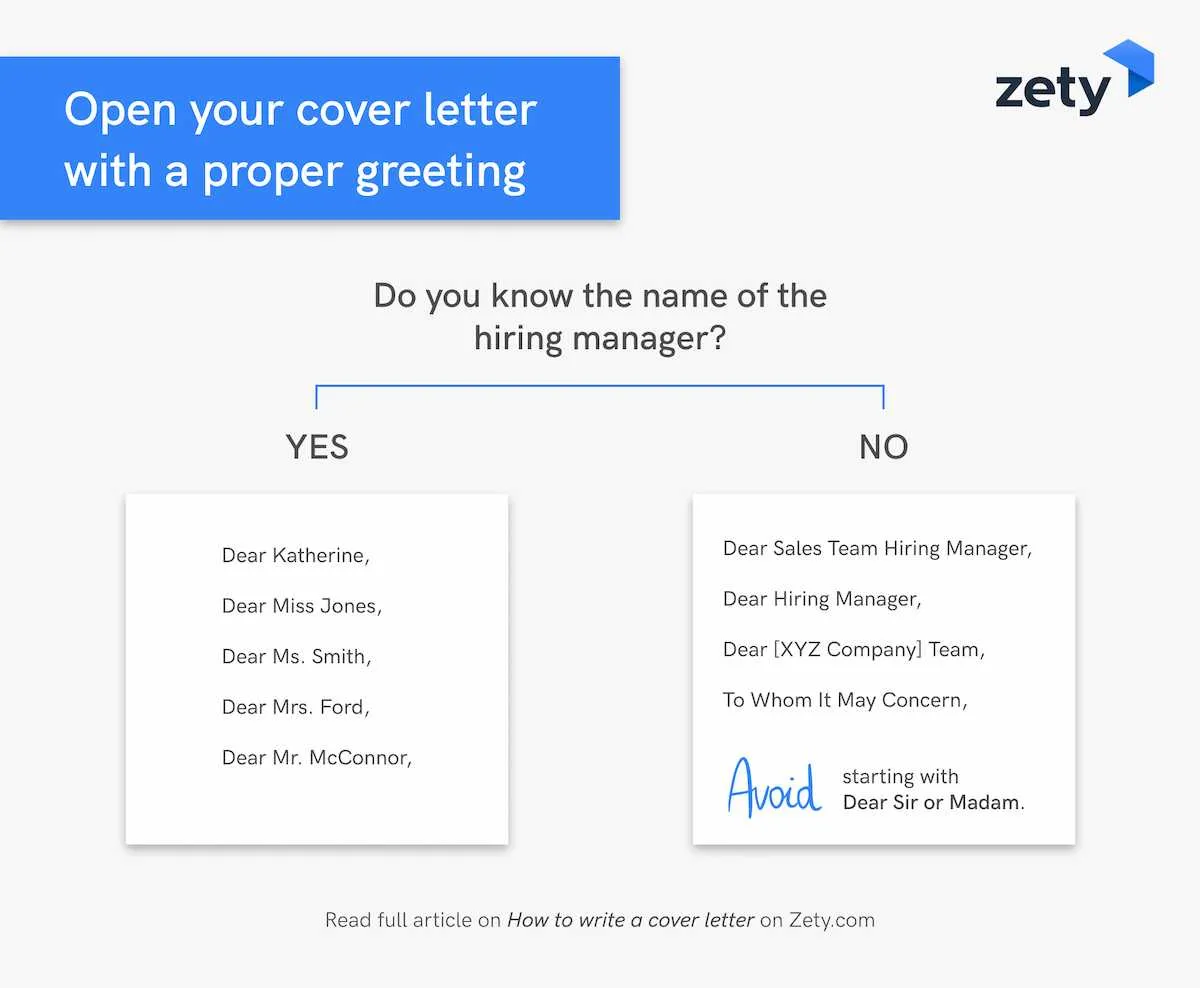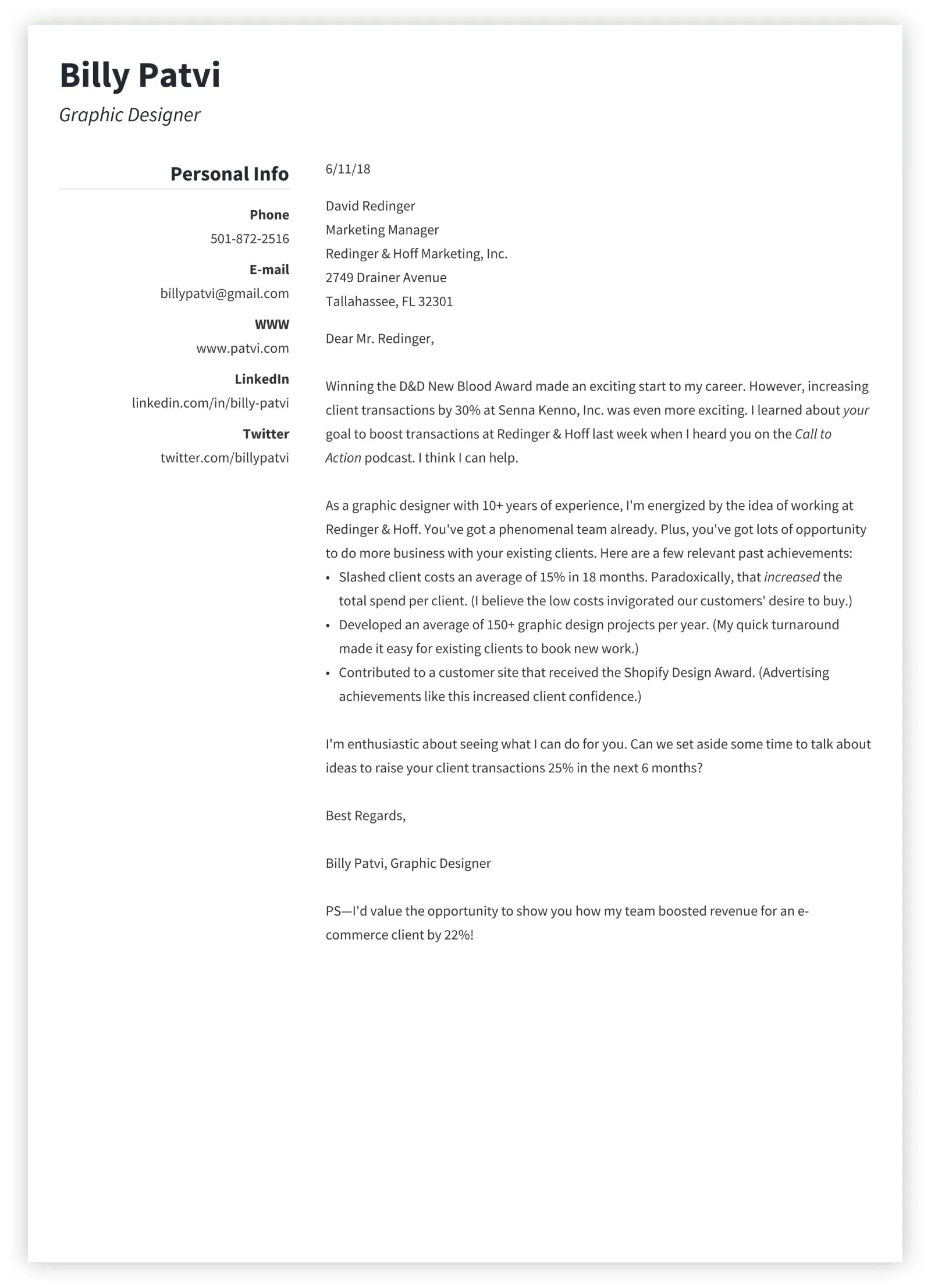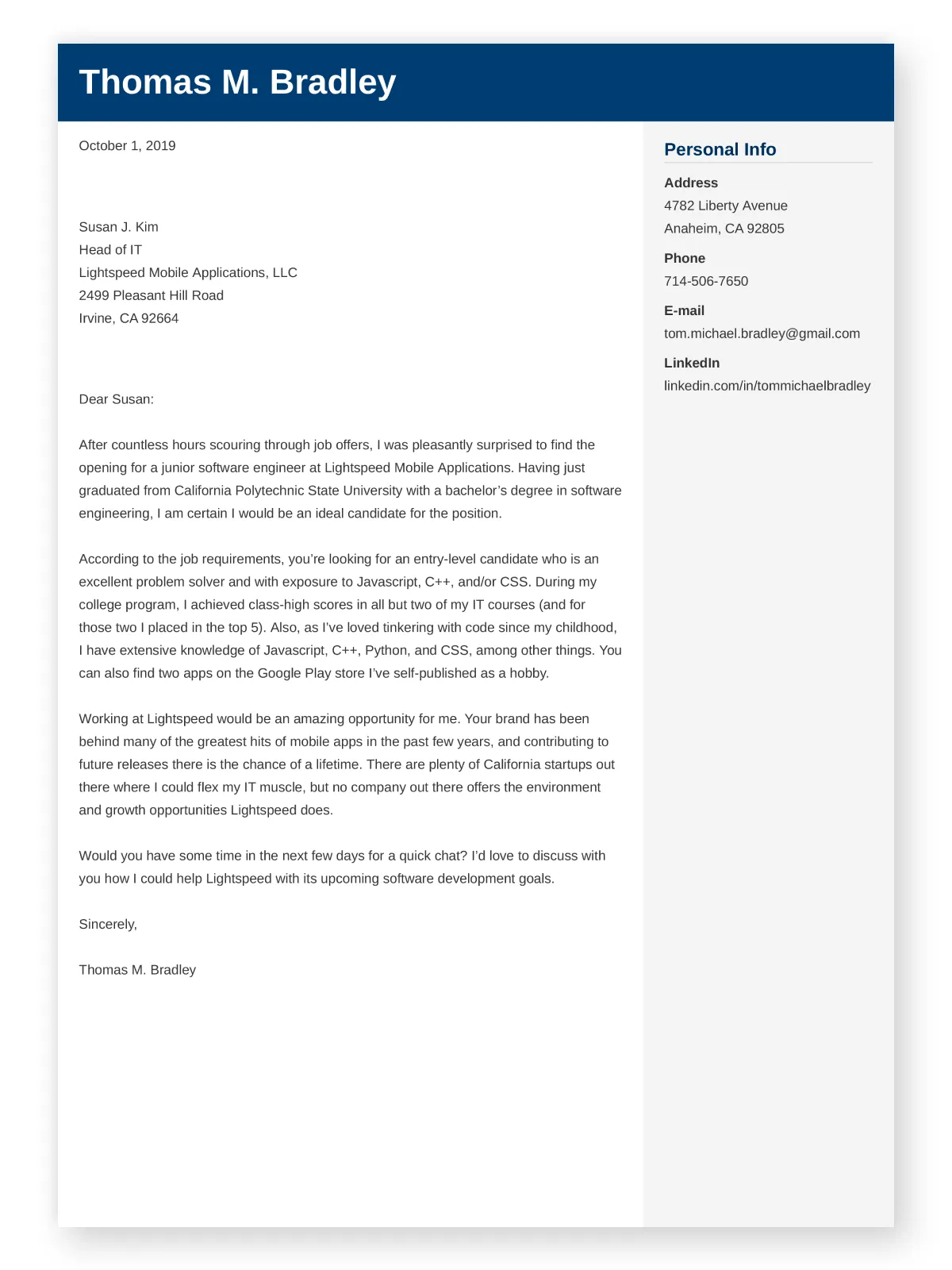What is a Cover Letter
A cover letter is a one-page document that you submit as part of your job application alongside your resume. It serves as an introduction, allowing you to highlight your skills, experiences, and qualifications that are relevant to the position you are applying for. The primary goal of a cover letter is to persuade the hiring manager to read your resume and consider you for an interview. A well-crafted cover letter showcases your personality, demonstrates your interest in the company, and explains why you are a great fit for the role. It’s your chance to make a strong first impression and differentiate yourself from other candidates. A strong cover letter will significantly increase your chances of getting your resume noticed, so always make sure to tailor your cover letter to each specific job application you submit.
Why Is a Cover Letter Important
Cover letters are important for several reasons. First and foremost, they provide context to your resume. While your resume lists your skills and experiences, your cover letter allows you to explain how those qualifications align with the specific job requirements and the company’s needs. A cover letter also demonstrates your communication skills, writing proficiency, and attention to detail. These are essential attributes that employers value in potential employees. Furthermore, a cover letter enables you to express your enthusiasm for the position and the company, which can set you apart from candidates who may only submit a resume. Many hiring managers will look at the cover letter first, so not having one can automatically disqualify your application. A cover letter demonstrates that you are serious about the opportunity and have taken the time to personalize your application.
Key Components of a Cover Letter

A well-structured cover letter typically includes several key components that work together to create a compelling narrative and showcase your qualifications. Understanding these components is crucial to crafting an effective cover letter that captures the attention of the hiring manager. The cover letter should be organized logically, with each section contributing to a cohesive and persuasive argument. Start with a professional header and greeting, followed by a captivating opening paragraph that grabs the reader’s attention. The body paragraphs should highlight your relevant skills and experiences, tailoring them to the specific job description. Include quantifiable accomplishments to demonstrate your impact. Conclude with a strong closing paragraph, call to action, and formal closing. Let’s break down the specifics of each key part.
Header Section
The header of your cover letter should include your contact information, such as your name, address, phone number, and email address. It should also include the date and the recipient’s contact information, including their name, title, company, and address. This information is typically placed at the top of the document, making it easy for the hiring manager to see your contact details and know where to send a response. Ensure that your contact information is up-to-date and professional. The header sets the tone for your cover letter, so it’s essential to present a clean and organized look. Ensure your formatting is consistent with your resume, using a clear and easy-to-read font. Double-check all contact information for accuracy before sending.
Greeting
The greeting is the first interaction you have with the hiring manager through your cover letter, so it’s critical to get it right. A professional greeting, such as “Dear Mr./Ms./Mx. [Last Name],” is usually the best approach. If you know the hiring manager’s name, use it; otherwise, try to find out the name through research or contact the company directly. Avoid generic greetings like “To Whom It May Concern.” If you are unsure of the hiring manager’s name, a suitable alternative is “Dear Hiring Manager” or “Dear [Department Name] Hiring Team.” Always make sure you spell the name correctly and use the appropriate title. A personalized greeting shows that you have put in the effort to research the company and are attentive to detail.
Opening Paragraph

The opening paragraph is your chance to grab the reader’s attention and make a strong first impression. Start by clearly stating the position you’re applying for and how you found the job opportunity. Briefly mention why you are interested in the role and the company. Show your enthusiasm, and make a compelling case for why the hiring manager should continue reading. You can also mention a key accomplishment or skill that makes you an ideal candidate. Keep your opening paragraph concise, aiming for no more than three to four sentences. The opening should immediately convey your interest in the position and encourage the reader to learn more about your qualifications.
Body Paragraphs
The body paragraphs are where you showcase your skills, experiences, and qualifications in detail. The goal is to demonstrate how your background aligns with the job requirements and the company’s needs. Structure your paragraphs to highlight your relevant accomplishments and skills. Provide specific examples of how you have applied these skills in the past and the positive outcomes you achieved. Use the STAR method (Situation, Task, Action, Result) to tell a story about your experiences, providing context and concrete evidence of your capabilities. Each paragraph should focus on a particular aspect of your qualifications and connect them to the job description. Aim to keep the body paragraphs clear, concise, and easy to follow, with each one building your case as a strong candidate.
Highlighting Relevant Skills and Experiences
When highlighting your skills and experiences, focus on the qualifications listed in the job description. Identify the key requirements and tailor your cover letter to address them directly. Use action verbs to describe your accomplishments and quantify your results whenever possible. For example, instead of saying “Managed projects,” say “Managed multiple projects, resulting in a 15% reduction in costs and a 10% increase in efficiency.” Provide examples of how you have used your skills in previous roles. Make sure to demonstrate how your skills are transferable and relevant to the position. Use the body paragraphs to provide evidence that you possess the skills and experiences needed to succeed in the role.
Tailoring Your Cover Letter to the Job Description

Customizing your cover letter to the specific job description is essential for showing that you are a good fit for the role. Carefully review the job posting and identify the key requirements, skills, and qualifications. Then, use these requirements as a guide to structure your cover letter. Highlight your relevant experiences, skills, and accomplishments. Make sure to use keywords from the job description throughout your cover letter. This will show the hiring manager that you have taken the time to understand the role and have the qualifications that they are looking for. By tailoring your cover letter to the job description, you demonstrate your attention to detail and your commitment to the role.
Quantifying Your Accomplishments
Quantifying your accomplishments is a powerful way to demonstrate your impact and value to potential employers. Use numbers, percentages, and specific metrics to illustrate your achievements in previous roles. For example, instead of saying “Increased sales,” say “Increased sales by 20% in one year.” Provide concrete evidence of your contributions, such as the number of projects completed, the amount of money saved, or the improvements you made to processes. The use of numbers provides objective proof of your abilities and makes your cover letter more compelling. Quantifying your accomplishments will make your cover letter more persuasive and show the hiring manager that you are a results-oriented candidate.
Closing Paragraph
The closing paragraph should summarize your interest in the position and reiterate your qualifications. Reiterate your enthusiasm for the opportunity, referencing your key skills and how they align with the role. Express your confidence in your ability to succeed and contribute to the company. Thank the hiring manager for their time and consideration, and make sure the tone remains professional and positive. This is your last chance to make a positive impression, so make sure your closing paragraph leaves the reader with a strong sense of your value as a candidate.
Call to Action

A call to action is a crucial element of the closing paragraph. It encourages the hiring manager to take the next step, such as scheduling an interview. Make a clear and confident request for an interview. You can phrase it as “I am eager to discuss how my skills and experiences can benefit your team” or “I am available for an interview at your earliest convenience.” By including a call to action, you guide the hiring manager to the next step in the hiring process and increase your chances of getting an interview. Avoid passive language and make a direct and proactive statement.
Formal Closing and Signature
Finish your cover letter with a formal closing, such as “Sincerely,” “Best regards,” or “Yours sincerely.” Choose a closing that is appropriate for the level of formality of the company and the position you are applying for. After your closing, leave space for your handwritten signature if you are submitting a physical copy. If submitting electronically, simply type your full name below the closing. Ensure your signature is legible and professional. A well-crafted closing and signature add a polished final touch to your cover letter.
Formatting and Design Tips
The formatting and design of your cover letter can significantly impact the reader’s first impression. Use a professional font like Times New Roman, Arial, or Calibri in a readable size (11 or 12 points). Maintain consistent font sizes and styles throughout the document. Use appropriate margins (1 inch on all sides) and spacing (single-spaced within paragraphs and double-spaced between paragraphs) to make your cover letter easy to read. Keep your cover letter concise, ideally one page long, unless specifically requested otherwise. Use bullet points or numbered lists to highlight key skills, achievements, or responsibilities. Ensure the layout is clean, organized, and free of distractions. Properly formatted cover letters will make you look professional and increase the readability of your cover letter.
Proofreading and Editing Your Cover Letter

Proofreading and editing your cover letter is essential to ensure that it is free of errors and presents you in the best possible light. Carefully check for grammatical errors, spelling mistakes, and punctuation errors. Verify that your contact information and the recipient’s details are correct. Review the formatting, ensuring consistent spacing and alignment. Read your cover letter aloud to catch any awkward phrasing or sentence structure. Have a trusted friend, mentor, or career counselor review your cover letter for feedback. Pay close attention to the tone of your cover letter, making sure it is professional and enthusiastic. A well-proofread and edited cover letter shows that you pay attention to detail, and that you take the application process seriously.
Common Mistakes to Avoid
Several common mistakes can undermine the effectiveness of your cover letter. Avoid generic cover letters that are not tailored to the specific job or company. Do not simply repeat your resume; instead, provide additional context and highlight relevant experiences. Refrain from using overly casual language, slang, or emojis. Avoid typos, grammatical errors, and spelling mistakes at all costs. Do not include irrelevant information or personal details that are not appropriate for a professional document. Do not make negative comments about previous employers or positions. Ensure your cover letter is the correct length, and follow any specific instructions provided in the job posting. By avoiding these common mistakes, you can ensure that your cover letter makes a positive impression on the hiring manager.
Cover Letter Examples and Templates
Using cover letter examples and templates can be a helpful starting point when crafting your own cover letter. These resources provide a structure and format for your document. You can find examples and templates online, in books, and through career services. When using a template, be sure to customize it to match the specific job requirements and your experiences. Use the template as a guide, and personalize the content to showcase your skills and accomplishments. Avoid using a template without making substantial changes; instead, adapt the template to reflect your unique qualifications and the specific needs of the job. Be sure to change the template’s information with your own and make it fit the job that you want.
